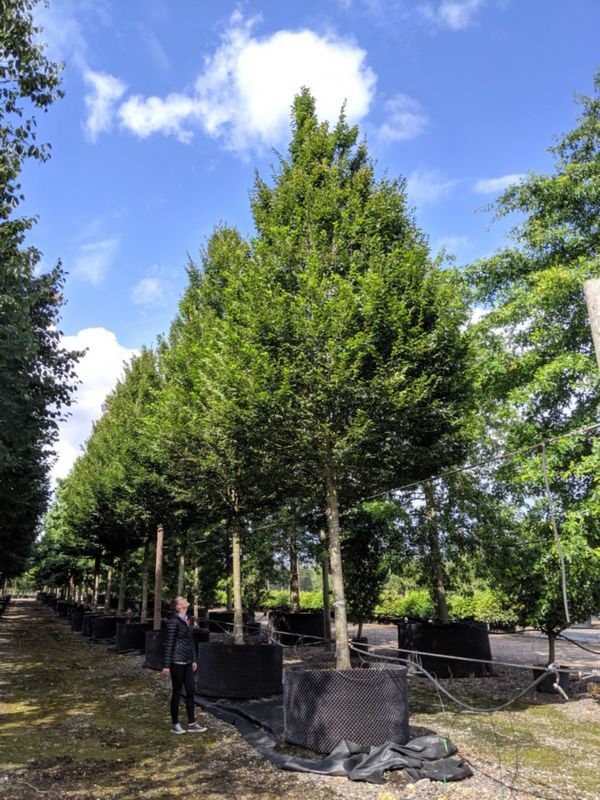
Carpinus betulus Fastigiata Upright Hornbeam Deepdale Trees
This 'Fastigiata' is the most common cultivar of the European Hornbeam. In fact, this columnar, upright form is used in the Midwest and Eastern USA much more than the mother species, which is wide spreading. I find this tree to be used occasionally by municipalities as street and park trees. I don't find the typical homeowner really using it.

Carpinus betulus Fastigiata Fastigiate Hornbeam Tree Free Delivery
Description. An attractive, densely branched, columnar tree when young, aging into a stately, broad cone shape with handsome, fluted, gray bark. Distinctive, dark green foliage turns yellow-orange in fall. Plant in groups as a screen or windbreak, or use as a specimen in a narrow yard or street side. Takes well to hard pruning as a formal hedge.
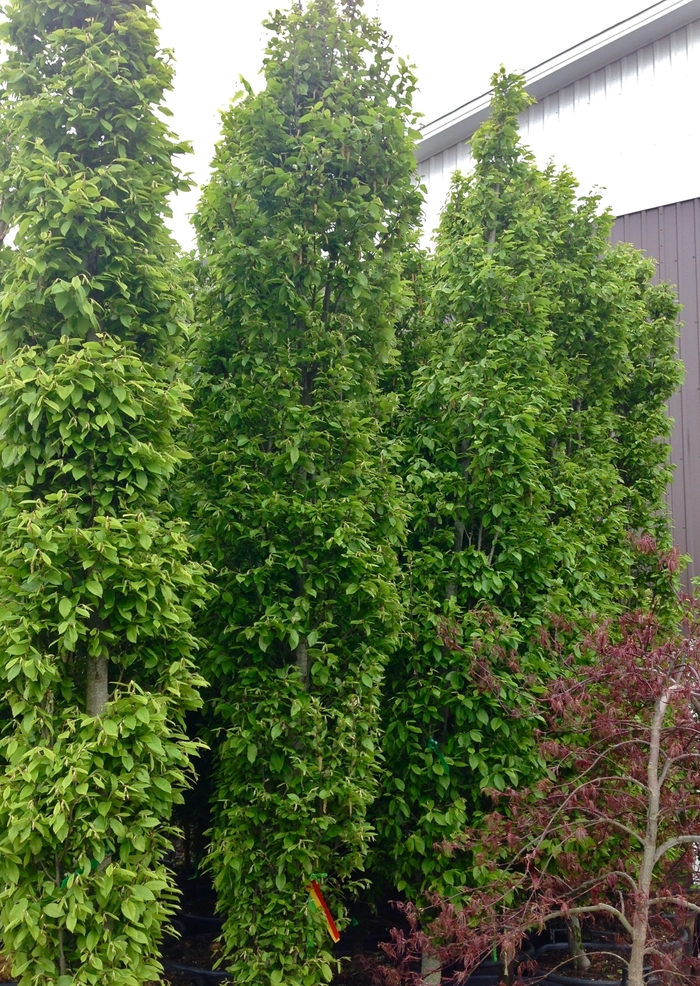
Carpinus betulus 'Fastigiata' Pyramidal European Hornbeam Evans Nursery
A street tree in London: This Carpinus betulus 'Fastigiata' was 27 m tall with a girth of 1.73 m in June 2020; the shape of the lower crown suggests a history of pruning. Image Ron Kemeny. The clone's reliability as much as the regularity of its branching makes Carpinus betulus 'Fastigiata' a good choice for a broad avenue. Bushy Park, west.

Trees Carpinus betulus European Hornbeam
Carpinus betulus'Fastigiata' Figure 1. Middle-aged 'Fastigiata' European Hornbeam. 'Fastigiata' European Hornbeam1 Edward F. Gilman and Dennis G. Watson2 INTRODUCTION 'Fastigiata' European Hornbeam, the most common cultivar sold, grows 30 to 40 feet tall and 20 to 30 feet wide, without a central leader but instead
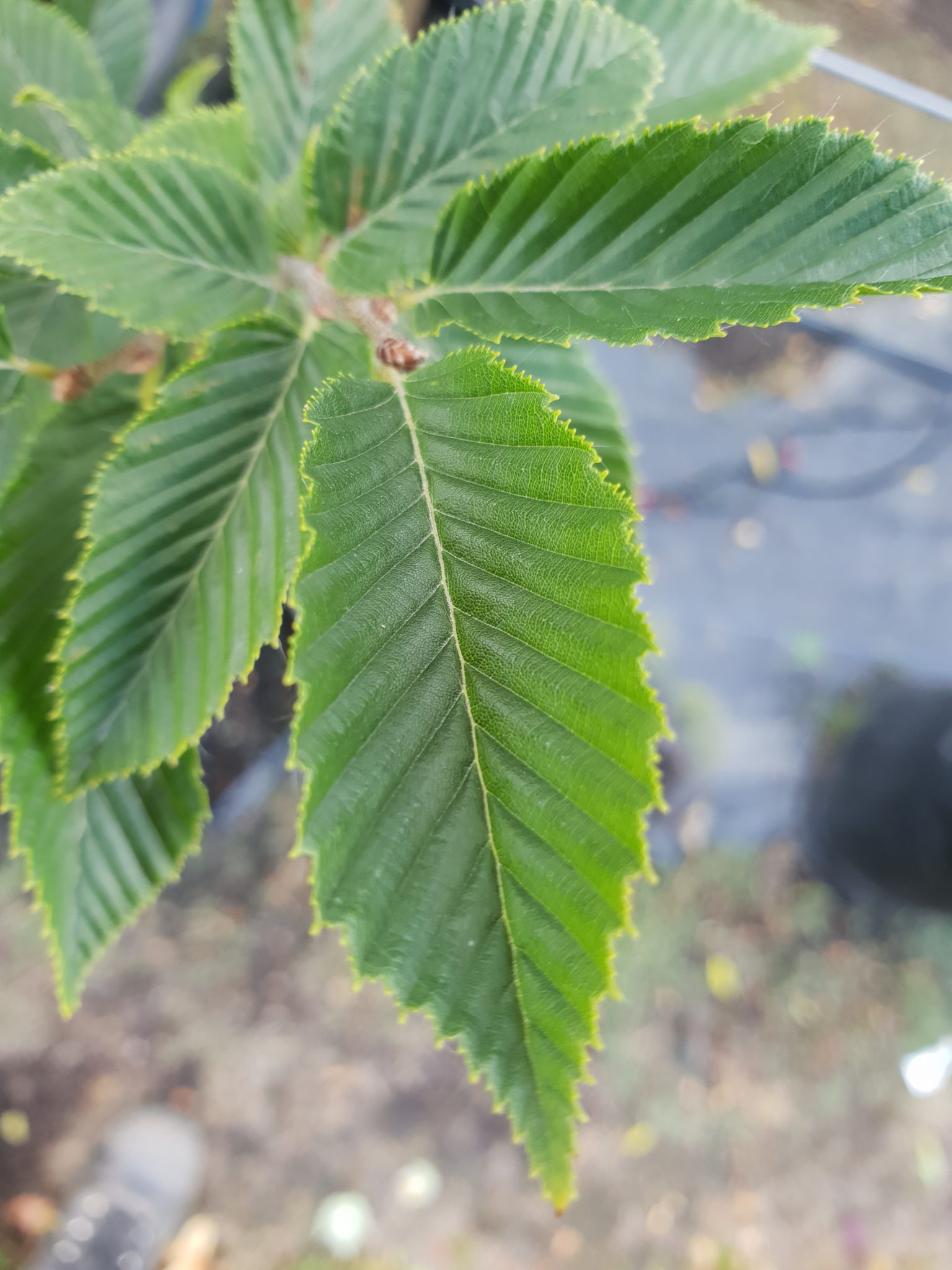
Carpinus betulus 'Fastigiata' Little Big Tree Company Christchurch New Zealand
Scientific name: Carpinus betulus Pronunciation: kar-PYE-nus BET-yoo-lus Common name (s): 'Fastigiata' European Hornbeam Family: Betulaceae USDA hardiness zones: 5A through 8B (Fig. 2) Origin: not native to North America Invasive potential: little invasive potential
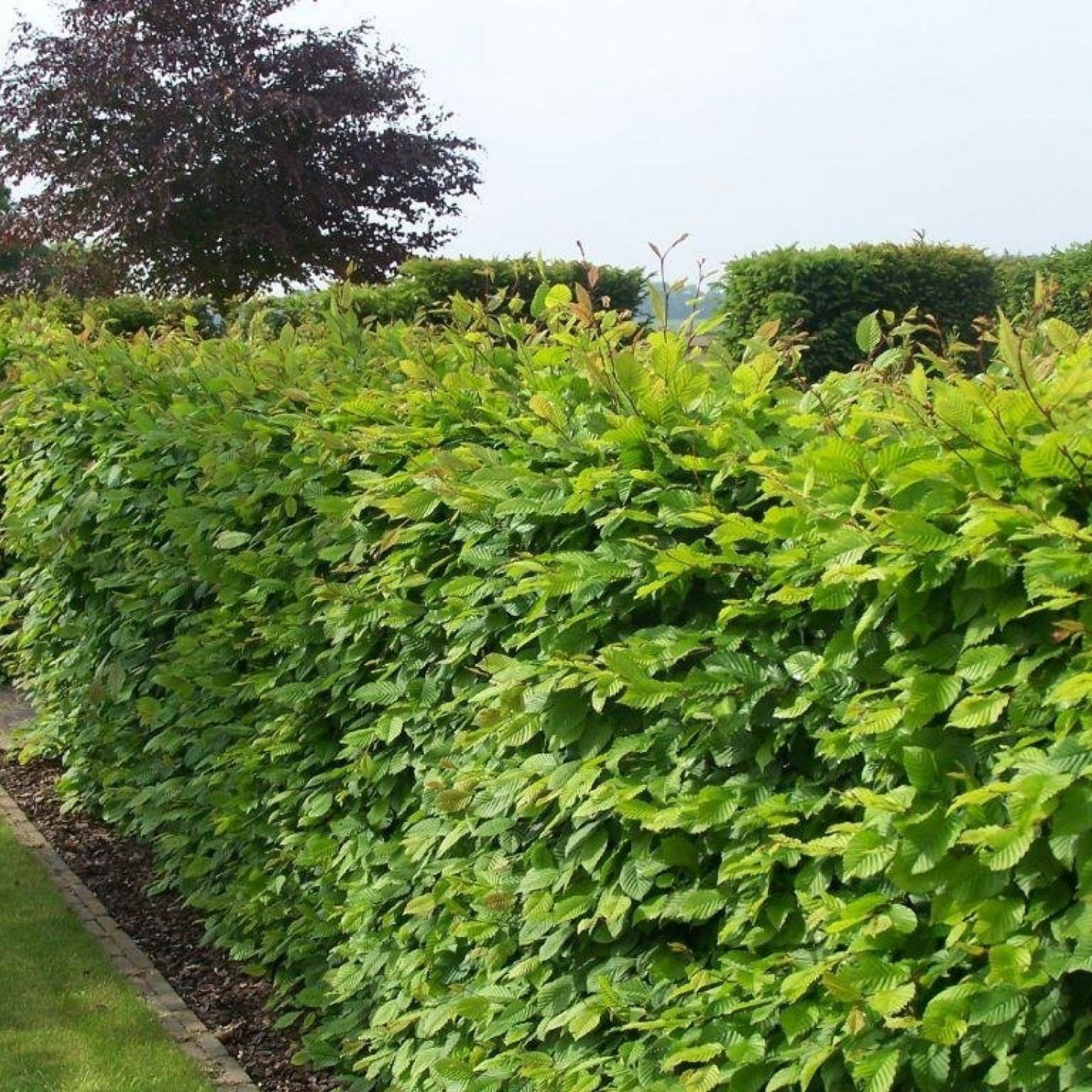
EUROPEAN HORNBEAM Carpinus Betulus 20 SEEDS
Pronunciation: kar-PI-nus BET-u-lus Family: Betulaceae Genus: Carpinus Type: Broadleaf Native to (or naturalized in) Oregon: No Deciduous tree, 30-50 ft (9-15 m), initially columnar but soon becoming oval-vase shaped, very symmetrical, no central leader. Leaves evenly distributed, has a sheared look. Hardy to USDA Zone 4 Introduced before 1883.

Carpinus betulus Fastigiata (Upright Hornbeam) Nangle and Niesen Wholesale Tree Nursery Cork
Important properties Height: 15-18 m Crown: broad ovoid, dark, dense crown Leaf: green Flowers: yellowgreen, flowers in April Autumn colour: yellow Download PDF View more specifications Clear stem (9) Feathered (10) Multi-stem (2) Show 4 more sizes View cart Add to cart Carpinus betulus 'Fastigiata'
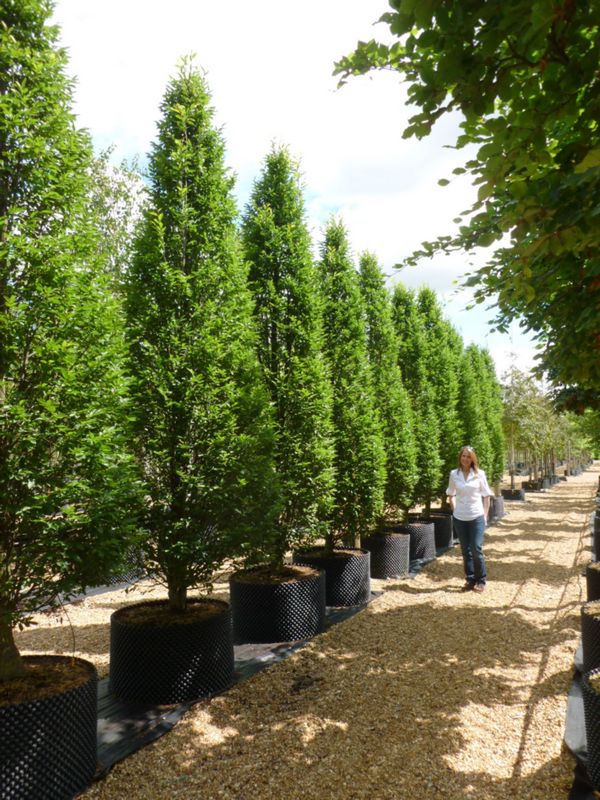
Carpinus betulus Fastigiata Upright Hornbeam Deepdale Trees
Scientific name: Carpinus betulus 'Fastigiata' Description European Hornbeam is characterized by crisp clean green foliage during the summer followed by brilliant yellow in the fall. It has a naturally sheared appearance. Morphology: This is a deciduous tree that matures to 45' in height and 30' in width.

Carpinus betulus 'Fastigiata' (zuilvormige haagbeuk) Royalhedge
Carpinus betulus 'Fastigiata' hornbeam 'Fastigiata' Upright deciduous tree, the crown narrow when young, becoming compact and ovoid. Bright green ribbed leaves are ovate, turning yellow in autumn. Fruiting catkins conspicuous, to 8cm in length. Good for woodland settings Synonyms Carpinus betulus 'Pyramidalis' Join the RHS today and save 25%
Trees of Santa Cruz County Carpinus betulus 'Fastigiata' Columnar Hornbeam
Carpinus betulus is relatively trouble-free and tolerates a wide range of soil conditions and some shade. This plant is also very tolerant of heavy pruning, making it useful as a hedge. The cultivar 'Fastigiata' is a narrow, columnar cultivar with densely set, broom-like branches.

BestandCarpinus betulus 'Fastigiata' by Line1.jpg Wikipedia
The fruit is a small hard brown nutlet with 3-lobed bracts and appears from September to October. European hornbeam attracts small birds, and mammals serving as a source of food, shelter, nesting, and roosting. It also supports moth larvae making it an excellent addition to a pollinator or nighttime garden.
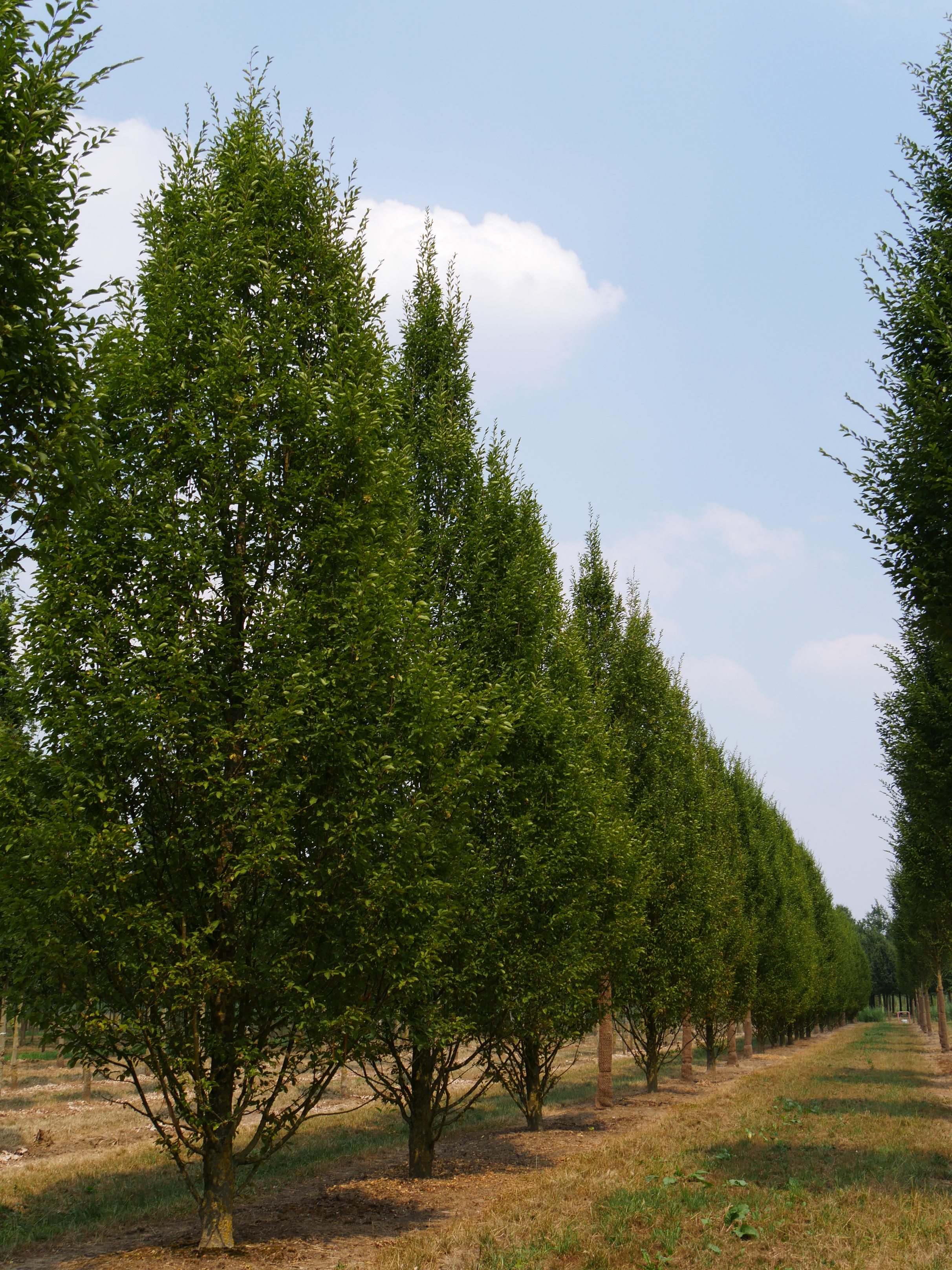
Carpinus betulus 'Fastigiata' Carpinus betulus 'Fastigiata' Van den Berk Nurseries
Carpinus betulus 'Fastigiata' Hornbeam - European Fastigate European Hornbeam is an excellent tree for urban or formal sites because of its tight, extremely regular form and excellent disease resistance. When young, Carpinus betulus 'Fastigiata' is narrow and very upright, but it broadens into a dense tight pyramidal oval as it matures.

Carpinus betulus 'Fastigiata' Columnar European Hornbeam Urban Garden Center
Position Soil Clay / Heavy / Moist / Well Drained / Light / Sandy Hornbeam, Carpinus betulus, is a large deciduous tree, similar to beech. It's a popular choice for hedging, and supports a wide variety of wildlife. Carpinus betulus 'Fastigiata' is a particularly lovely variety.

Carpinus betula Fastigiata, European Hornbeam Sugar Creek Gardens
Carpinus betulus 'Fastigiata' Tree Fastigiate Hornbeam Trees From £75 (inc VAT) View Pricing & Options Description This Upright Hornbeam tree, with its dense foliage, makes a wonderful slender specimen tree or can be used for topiary. It's equally impressive when used in a group for screening purposes or along an avenue.
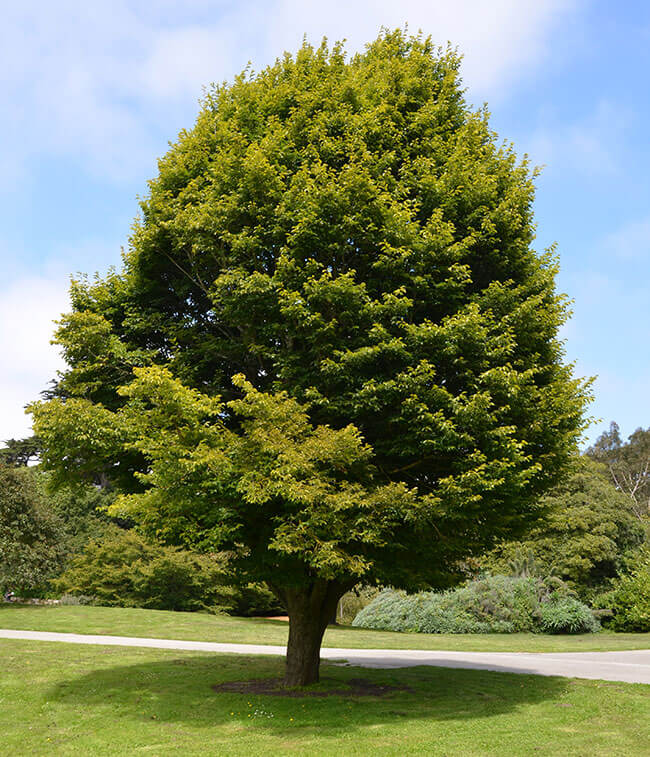
Carpinus betulus 'Fastigiata' Boething Treeland Farms
Hornbeam, Carpinus betulus, is a large, attractive tree native to the UK. The apple green, pleated foliage turns yellow and orange in autumn - this is often held on the tree during winter. Green catkins appear in spring and winged nuts (called samaras) develop in autumn. Hornbeams have a pyramidal shape that later becomes more rounded.
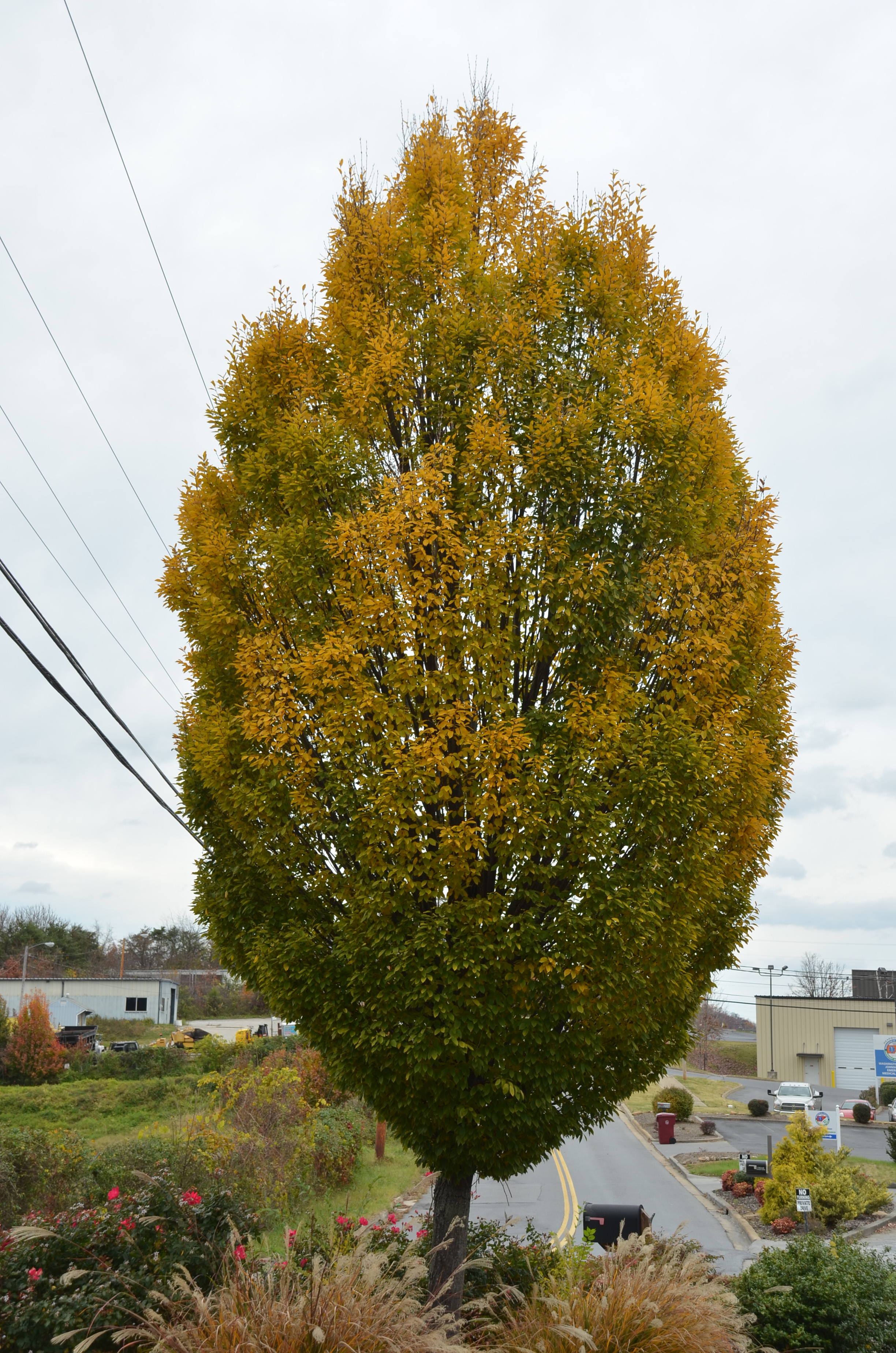
European Hornbeams Serve As Great Garden Sentinels What Grows There Hugh Conlon
Carpinus betulus, the common hornbeam, is a of tree in the birch Betulaceae, to Western Asia and central, eastern, and southern Europe, including southern England. [1] It requires a warm climate for good growth, and occurs only at elevations up to 1,000 metres (3,281 ft).